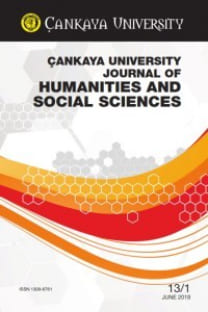Yabancı Bir Kültürü Anlamak için Yabancı Dil Öğretiminde Çevirinin Kullanılması
Bu
makalenin amacı yabancı dil öğretiminde, karşı kültürün imgeleri dikkate
alındığında, edebi ve kültürel çevirinin dil öğretimi teknikleriyle bir arada
nasıl kullanıldığını göstermektir. Yabancı dil öğretiminde kullanılan bu
imgeler, ilgili kültürle, kültürel mirasla ve iletişim bağlamı bilgisiyle
ilgili olup öğrenme motivasyonunu arttırır. Bu makale yabancı dil öğretimi,
evrimsel psikoloji (insanların hikayelere olan ihtiyacı), edimbilim, kültürel
merak, dilbilim ve öğrenci psikolojisi alanlarındaki etkili öğretim
yöntemlerini ortaya çıkararak yabancı dil öğretimine disiplinlerarası bir
çalışma yaklaşımı getirmektedir. Makalede varılan sonuçlar, öğrenmede
gösterilen görsel düşünme eğilimi sayesinde yeni öğrenilen kavramların
düzeltilmesi için etkili öğretim tekniklerinin geliştiğini göstermektedir.
Farklı dillerin farklı anlama ve dünyaya bakış açıları sunabileceğini iddia
eden dilbilim kuramları, yabancı dil öğrenen kişilerin ilgisini çekmek ve
motivasyonlarını arttırmak için kullanılabilir. Youtube’daki Russian in Three Minutes (Üç Dakikada Rusça)
videosunda ders veren kişi, İngilizcede günaydın anlamına gelen “good
morning” ifadesinin Rusçadaki bire bir karşılığının “kibar sabah” olduğunu
söyler. Bu tür örnekler, öğrendikleri yabancı dilin kendilerine sunduğu farklı
düşünce yapılarına ve bakış açılarına dair zihinlerinde gerçek bir resim
oluşturabilmeleri için yabancı dil öğrenenlere yardımcı olabilir.
Anahtar Kelimeler:
Görsel düşünme, edimbilim, hayal gücü, düşünce yapısı, dilbilim
Using Translation in Foreign Language Teaching to Understand a Foreign Culture
The purpose of this paper is to explain how teaching a
foreign language benefits from taking images of its culture into account, through
presentation of curiosities related to the respective culture, cultural
background and knowledge of the context of communication. The paper brings an
interdisciplinary studies approach to foreign language teaching, by looking for
efficient teaching methods going through the fields of foreign language
teaching, evolutionary psychology (the humans’ need for stories), pragmatics,
cultural curiosities, linguistics and student psychology. The conclusions of
the paper show that the tendency towards visual thinking in learning leads to
efficient ways of teaching techniques in order to fix new notions. The
linguistic theories claiming that different languages can offer different ways
of understanding and looking at the world may be used to arouse interest and
motivation in learners. We notice in YouTube video tutorials for foreign
language learning, such as a Russian in
Three Minutes video, the tutor mentioning that in Russian, the equivalent
for the English greeting “good morning” is, literally, “kind morning”. Such
examples can help learners form a true picture in their minds of the different
mindset and the different perspectives the foreign language they learn opens up
to them.
Keywords:
Visual thinking, pragmatics, imagination, mindset, linguistics,
___
- Anderson, Benedict R. Imagined Communities: Reflections on the Origin and Spread of Nationalism. Verso, 1991. Brown, Gillian, et al. Teaching Talk: Strategies for Production and Assessment. Cambridge University Press, 1984. Cohen, Andrew D. Language Learning. Insights for Learners, Teachers, and Researchers. Newbury House Publishers, 1990. Coleridge, Samuel T. “From Biographia Literaria.” The Norton Anthology of English Literature, edited by M. H. Abrams, vol. 2, W. W. Norton & Company, 1986, pp. 378-395. Davies, Martin. “Philosophy of Language.” The Blackwell Companion to Philosophy, edited by Bunnin, Nicholas and Eric Tsui-James, Blackwell, 1995, pp. 90-146. Dragusin, Denisa. “Politeness across Cultures: (In)Directness in English and Romanian,” Interculturalité et Défi Pragmatiques. La Francopolyphonie 9/2014, vol. 1, pp. 107-116. Finch, Geoffrey. Linguistic Terms and Concepts. Palgrave, 2000. Gericke, Jaco. The Hebrew Bible and Philosophy of Religion. Society of Biblical Literature, 2012. Grant, Colin B. and Donald McLaughlin, editors, Critical Studies, vol: 16. Rodopi, 2001. Harmer, Jeremy. The Practice of English Language Teaching. Pearson Education Limited, 2001. Holmes, Janet. Women, Men and Politeness. Longman, 1995. Kosara, Robert. You Only See Colours You Can Name. 20 November 2011, eagereyes.org/blog/2011/you-only-see-colors-you-can-name Macdonald, Fiona. There’s Evidence Humans Didn’t Actually See Blue Until Modern Times, April 7, 2018, www.sciencealert.com/humans-didn-t-see-the-colour-blue-until-modern-times-evidence-science Newmark, Peter, “Pragmatic Translation and Literalism.” TTR: traduction, terminologie, rédaction, vol. 1, no. 2, 1988, pp. 133-143. Parkinson, Mike. “The Power of Visual Communication.” www.billiondollargraphics.com/infographics.html, 2010. Recanati, François. Literal Meaning. Cambridge University Press, 2004. Rueda, Yined Tello. “Developing Pragmatic Competence in a Foreign Language,” Theoretical Discussion Papers, Colombian Applied Linguistics Journal, no. 8, September 2006, pp. 170-186. Sapir, Edward. The Status of Linguistics as a Science. Language, vol. 5, no. 4, December, Linguistic Society of America, 1929. Stoica, Ovidiu and Ana Drobot. “Perception: How Personal Is It?” Agonia.ro, 2010, www.agonia.net/index.php/essay/13951924 Strauch, Ralph. The Reality Illusion. Somatic Options, 2011. Taggart, Emma, February 12, 2018, The History of the Color Blue: From Ancient Egypt to the Latest Scientific Discoveries, mymodernmet.com/ shades-of-blue-color-history. Taguchi, Naoko. “Pragmatic Competence in Japanese as a Second Language: An Introduction.” Pragmatic Competence, edited by Naoko Taguchi. Mouton de Gruyter, 2009, pp. 1-18. Underhill, Nic. Testing Spoken Language. A Handbook of Oral Testing Techniques. Cambridge University Press, 1990. Vianu, Lidia. The AfterMode. Present Day English Fiction. Contemporary Literature Press, 2012, editura.mttlc.ro.
- ISSN: 1309-6761
- Yayın Aralığı: Yılda 2 Sayı
- Başlangıç: 2004
- Yayıncı: Çankaya Üniversitesi
Sayıdaki Diğer Makaleler
Edebiyat Türleri Karşı Karşıya: Roman-Mesnevî ve Anlatıcının Konumu
Yabancı Bir Kültürü Anlamak için Yabancı Dil Öğretiminde Çevirinin Kullanılması
Sessizleştirilmiş Öteki’ne Ses Verme Çabası: Cyprian Norwid and Barbara Sadowska Çevirisi Üzerine
The Return of England in English Literature
Philip GLOVER, Adwaa Sabah Shukur AL-TEKREETİ
Qurratulaen LİAQAT, Asia MUKHTAR
Metinlerarası Yaratıcılık Açısından Çeviri: Fransızca ve Türkçede La Galatea Üzerine Bir Çalışma
İngilizce ve Fransızca Eleştirel Söylem Çözümlemesi Öğretimi
Çevrimiçi İltifatlar Aracılığı ile Kültür Etkileşimi
The Return of England in English Literature, by Michael Gardiner
